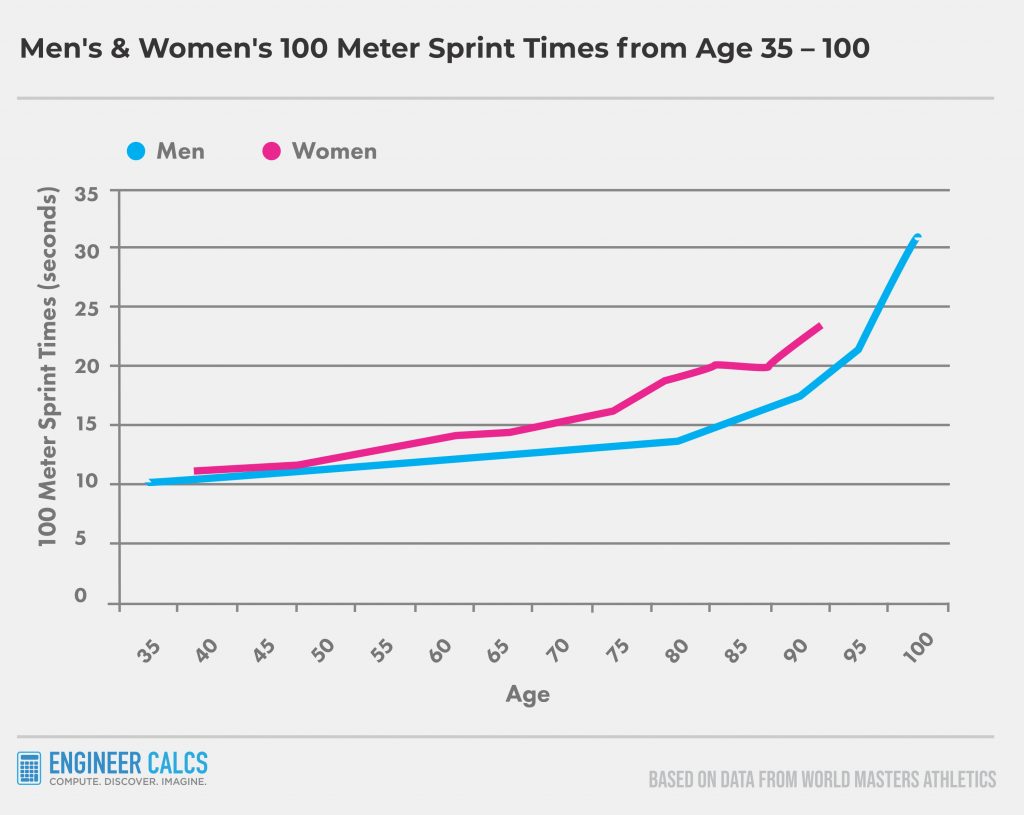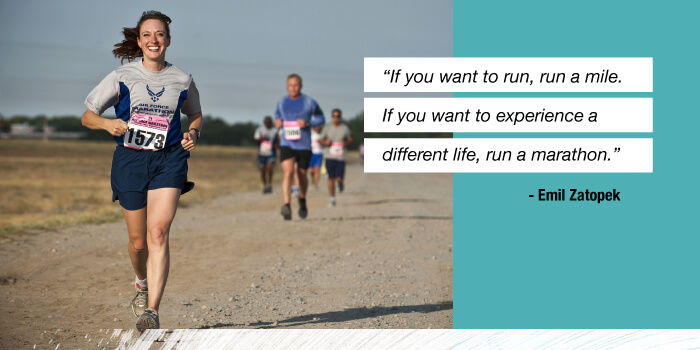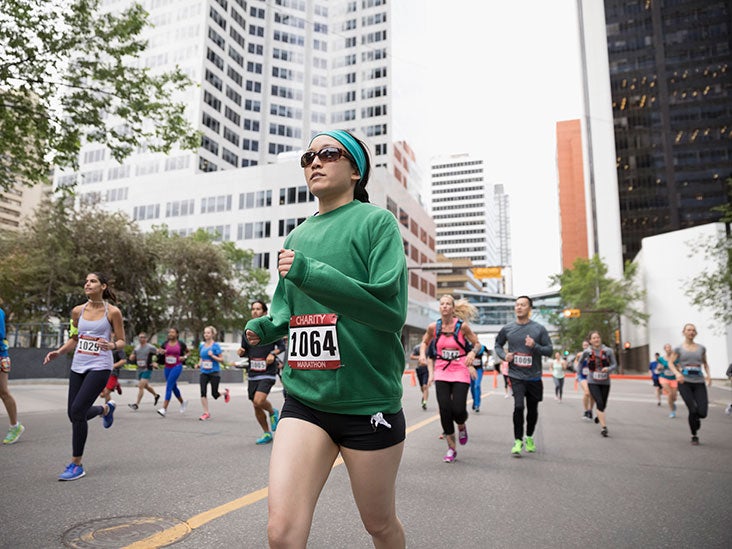Unraveling the Average Marathon Runner’s Speed
Understanding the average speed of marathon runners is a fascinating yet complex topic, as it involves a myriad of factors that can significantly influence a runner’s pace. The typical marathon runner’s speed generally falls between 4 to 6 miles per hour (mph), but this range can vary depending on various elements such as age, gender, fitness level, and training regimen.
Age plays a crucial role in determining the average speed of marathon runners, with older athletes generally running at slower paces than their younger counterparts. This difference can be attributed to the natural aging process, which often results in a decline in muscle mass, flexibility, and cardiovascular efficiency. However, it is essential to note that many mature runners maintain impressive speeds and continue to participate in marathons well into their golden years.
Gender is another significant factor that contributes to the average speed of marathon runners. On average, male runners tend to have a higher speed than female runners, primarily due to physiological differences such as muscle mass and lung capacity. Nevertheless, female athletes have made remarkable strides in marathon running, with many consistently posting impressive finishing times and narrowing the gap between male and female records.
Fitness level and training regimen are also critical determinants of the average speed of marathon runners. Runners who consistently engage in rigorous training programs, focusing on endurance, strength, and speed workouts, are more likely to achieve faster marathon times. Moreover, adopting a balanced nutrition plan, incorporating adequate rest and recovery, and addressing any biomechanical imbalances can further contribute to enhancing a runner’s pace.
In conclusion, the average speed of marathon runners is a multifaceted concept influenced by various factors, including age, gender, fitness level, and training regimen. By understanding these elements and implementing targeted strategies, runners can optimize their performance and potentially improve their marathon speed.
Comparative Study: Marathon Runner Categories and Their Paces
To gain a better understanding of the average speed of marathon runners, it is helpful to compare the paces of various categories of participants. These categories include amateur runners, professional athletes, and age group participants, each with unique characteristics and performance levels.
Amateur runners, also known as recreational runners, typically participate in marathons for personal satisfaction, fitness, and enjoyment. The average speed of marathon runners in this category usually ranges between 4 to 5 mph. Factors influencing their pace include fitness level, training regimen, and experience. Many amateur runners balance their marathon training with work, family, and other commitments, making it challenging to maintain a consistent and rigorous training schedule.
Professional athletes, on the other hand, are highly trained and experienced runners who earn a living through their marathon running careers. Their average speed of marathon running tends to be significantly faster than amateur runners, often exceeding 6 mph. Professional athletes typically have access to advanced training methods, nutrition plans, and recovery techniques, enabling them to maintain high levels of performance and consistency.
Age group participants are runners who compete within their specific age categories, often aiming to achieve personal bests or qualify for prestigious events like the Boston Marathon. The average speed of marathon runners in this category can vary widely, depending on factors such as age, gender, and fitness level. However, many age group participants consistently post impressive finishing times, demonstrating the potential for runners of all ages and abilities to excel in marathon running.
In conclusion, comparing the average speeds of different marathon runner categories provides valuable insights into the diverse world of marathon running. By understanding the unique challenges and strengths of each group, runners can better contextualize their own performance and set realistic goals for improvement.
The Impact of Training and Fitness Levels on Marathon Speed
Training and fitness levels significantly influence the average speed of marathon runners. By focusing on targeted training programs and improving overall fitness, runners can enhance their marathon performance and potentially achieve faster finishing times.
To begin with, it is essential to establish a solid foundation of aerobic fitness. Long, slow distance (LSD) runs are an excellent way to build endurance and aerobic capacity. These runs should be performed at a comfortable pace, allowing runners to maintain a conversation without becoming excessively winded. By gradually increasing the distance and frequency of LSD runs, marathon runners can significantly improve their aerobic fitness and lay the groundwork for faster paces.
In addition to LSD runs, incorporating interval training and tempo runs into a training program can help marathon runners improve their speed. Interval training involves alternating between high-intensity bursts of running and periods of active recovery, while tempo runs consist of sustained, moderate-intensity efforts. Both methods can enhance a runner’s lactate threshold, allowing them to maintain a faster pace for longer periods during a marathon.
Strength training is another crucial aspect of improving the average speed of marathon runners. Focusing on exercises that target the core, hips, and legs can help improve running economy, enabling runners to maintain a faster pace with less effort. Incorporating exercises such as squats, lunges, planks, and deadlifts into a training routine can help build the necessary strength and stability for marathon running.
Lastly, it is essential to prioritize rest and recovery to ensure optimal performance and prevent injuries. Adequate sleep, proper nutrition, and active recovery techniques, such as foam rolling and stretching, can help marathon runners maintain their fitness levels and continue to progress in their training.
In conclusion, the role of training and fitness levels in determining the average speed of marathon runners cannot be overstated. By focusing on aerobic fitness, interval training, strength training, and recovery, runners can significantly improve their marathon performance and potentially achieve faster finishing times.
How Environmental Conditions Influence the Average Marathon Runner’s Speed
Marathon runners often face a variety of environmental conditions that can impact their performance and average speed. Factors such as weather, altitude, and terrain can significantly affect a runner’s pace, making it essential to understand and adapt to these variables to optimize performance.
Weather is one of the most influential environmental factors affecting the average speed of marathon runners. Hot and humid conditions can lead to increased body temperature and dehydration, making it more challenging to maintain a fast pace. Runners can combat these adverse effects by adjusting their race strategy, wearing appropriate clothing, and staying well-hydrated. Cold and windy conditions, on the other hand, may require additional layers of clothing and a more conservative pace to prevent hypothermia and energy depletion.
Altitude is another critical factor that can impact the average speed of marathon runners. High altitudes can lead to reduced oxygen availability, making it more difficult for runners to maintain their usual pace. Acclimatization is essential for runners competing at high altitudes, which involves gradually increasing exposure to reduced oxygen levels in the weeks leading up to the race. Additionally, proper nutrition and hydration can help offset the effects of altitude on performance.
Terrain is a variable that can significantly influence the average speed of marathon runners. Running on hilly or mountainous terrain requires additional energy and effort compared to flat surfaces, which can slow a runner’s pace. To optimize performance on hilly courses, runners should incorporate hill training into their regimen, focusing on both uphill and downhill running techniques. For runners competing on flat courses, maintaining a consistent pace and focusing on efficient running form can help maximize speed.
In conclusion, environmental conditions such as weather, altitude, and terrain can significantly impact the average speed of marathon runners. By understanding and adapting to these variables, runners can optimize their performance and maintain their desired pace, regardless of the challenges presented by the environment.
The Influence of Age and Gender on Marathon Running Speeds
Age and gender play significant roles in determining the average speed of marathon runners. By examining statistics and trends across different demographics, runners can better understand their potential performance levels and set realistic goals for improvement.
Gender differences in marathon running speeds are primarily attributed to physiological factors such as muscle mass, lung capacity, and hormonal profiles. On average, male runners tend to have a higher average speed than female runners, but this gap has been steadily narrowing in recent years. The current world records for men and women in the marathon reflect this disparity, with the men’s record standing at 2 hours, 1 minute, and 39 seconds, while the women’s record is 2 hours, 14 minutes, and 4 seconds.
Age is another critical factor that influences the average speed of marathon runners. As runners age, they often experience a decline in muscle mass, flexibility, and cardiovascular efficiency, which can lead to slower finishing times. However, many mature runners continue to post impressive marathon performances, demonstrating that age is not necessarily a barrier to success. In fact, some studies suggest that runners may reach their peak marathon performance in their 30s, with declines becoming more pronounced in their 40s and beyond.
Comparing age group statistics can provide valuable insights into the impact of age on marathon running speeds. For instance, the average speed of marathon runners in the 20-24 age group is often faster than that of runners in older age groups. However, it is essential to note that many runners in older age groups maintain impressive finishing times, highlighting the importance of consistent training and a healthy lifestyle in mitigating the effects of aging on performance.
In conclusion, age and gender significantly influence the average speed of marathon runners. By understanding these factors and setting realistic performance goals, runners can optimize their training and maximize their potential for success in marathon running.
How to Improve Your Marathon Running Speed: A Comprehensive Guide
Improving your marathon running speed is a challenging yet rewarding endeavor that requires dedication, discipline, and a well-structured training plan. By incorporating various training techniques, nutrition strategies, and mental preparation tips, runners can enhance their performance and potentially achieve faster finishing times.
Training Techniques
To improve your marathon running speed, consider incorporating interval training, tempo runs, and hill repeats into your training regimen. Interval training involves alternating between high-intensity bursts of running and periods of active recovery, while tempo runs consist of sustained, moderate-intensity efforts. Hill repeats, on the other hand, focus on running uphill at a challenging pace, followed by a controlled descent. These methods can help build speed, endurance, and strength, ultimately leading to a faster average speed in marathon running.
Nutrition Strategies
Proper nutrition is crucial for optimizing marathon running performance. Focus on consuming a balanced diet rich in carbohydrates, proteins, and healthy fats. Adequate hydration is also essential, particularly during long runs and in hot, humid conditions. Additionally, consider experimenting with sports drinks, gels, or energy chews during training to determine which products best support your energy needs during a marathon.
Mental Preparation
Mental preparation plays a significant role in marathon running success. Developing a strong mindset, setting realistic goals, and practicing visualization techniques can help you maintain focus and motivation during training and on race day. Additionally, learning to manage race-day nerves and anxiety can contribute to a more enjoyable and successful marathon experience.
In conclusion, improving your marathon running speed involves a multifaceted approach that includes targeted training techniques, proper nutrition, and mental preparation. By committing to a consistent, well-rounded training plan and setting realistic performance goals, you can enhance your marathon running speed and achieve your desired outcomes.
Motivation and Inspiration: Real-Life Examples of Marathon Speed Improvement
Real-life examples of marathon runners who have significantly improved their average speeds can serve as powerful motivation and inspiration for those looking to enhance their own performance. By examining the methods, dedication, and commitment of these successful athletes, runners can gain valuable insights and practical tips for achieving their own marathon goals.
Consider the story of Runner A, a 35-year-old amateur marathoner who managed to shave 30 minutes off her personal best time in just one year. Through a combination of structured interval training, consistent long runs, and a focus on proper nutrition and hydration, Runner A was able to achieve a remarkable improvement in her marathon running speed. Her dedication to her training plan, as well as her ability to balance her running commitments with work and family life, serves as an inspiration to other runners looking to make similar strides in their performance.
Another inspiring example is Runner B, a 42-year-old male who defied the odds by setting a new personal best time in the marathon after several years of stagnant performance. By incorporating hill repeats and tempo runs into his training regimen, focusing on strength training and flexibility, and seeking guidance from a sports nutritionist, Runner B was able to achieve a significant increase in his average marathon speed. His story highlights the importance of continuous learning, adaptation, and innovation in the pursuit of marathon running success.
Lastly, the journey of Runner C, a 50-year-old age group participant, demonstrates that marathon speed improvement is possible at any age. Through a combination of consistent training, cross-training activities, and a focus on mental preparation and visualization techniques, Runner C was able to achieve a personal best time in the marathon, setting a strong example for other mature athletes looking to enhance their running performance.
In conclusion, the stories of these successful marathon runners serve as powerful motivation and inspiration for those looking to improve their own average marathon running speed. By adopting their methods, committing to a well-structured training plan, and maintaining a strong focus on proper nutrition, hydration, and mental preparation, runners of all ages and abilities can achieve their marathon running goals.
The Future of Marathon Running: Trends and Predictions for Average Speeds
As technology, training methods, and athletic performance continue to advance, the landscape of marathon running is constantly evolving. Examining emerging trends and making predictions for future average marathon running speeds can help runners, coaches, and enthusiasts better understand the potential for human performance in this enduring sport.
Advancements in Training Methods
The development of new training methods and technologies, such as wearable devices and AI-powered coaching apps, is expected to contribute to improved marathon running speeds in the coming years. By providing real-time feedback on performance metrics and offering personalized training plans, these tools can help runners optimize their training and better prepare for race day.
Technological Innovations
Technological advancements in shoe design, textile materials, and nutrition products are also anticipated to play a significant role in future marathon running speed improvements. As manufacturers continue to innovate and refine their offerings, runners can expect to benefit from lighter, more durable, and better-performing gear, enabling them to maintain faster paces for longer periods.
Athlete Performance and Potential
The ongoing exploration of human performance and potential, driven by scientific research and coaching advancements, is likely to result in faster average marathon running speeds in the future. By better understanding the physiological, psychological, and biomechanical factors that contribute to marathon success, athletes can develop more effective training strategies and achieve new heights in their performance.
In conclusion, the future of marathon running holds great promise for faster average speeds, driven by advancements in training methods, technological innovations, and a deeper understanding of athlete performance and potential. As the sport continues to evolve, runners at all levels can look forward to new opportunities for growth, achievement, and personal bests in the marathon.




:max_bytes(150000):strip_icc()/12-Week-Marathon-Training-Plan-pg1-92306b2d761f457599b5a887a60245e0.jpg)




